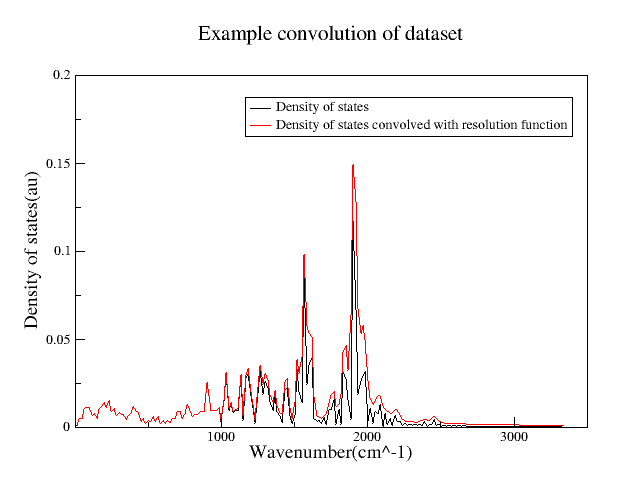Table of Contents
Imports 1D dos and vac functions from an nMolDyn 4 output file,convoluting it with a resolution function if required.
| Name | Direction | Type | Default | Description |
|---|---|---|---|---|
| Directory | Input | string | Mandatory | Path to directory containing dat files |
| Functions | Input | str list | Names of functions to attempt to load from file | |
| ResolutionConvolution | Input | string | No | Use resolution function to ‘smear’ dos data? Allowed values: [‘No’, ‘TOSCA’] |
| OutputWorkspace | Output | Workspace | Mandatory | Output workspace name |
Loads density of states and velocity autocorrelation data from version 4 of nMOLDYN saved in an ASCII format after being extracted from the ‘.tar’ archive. Will convolute this data with an instrument resolution function if required. Only a TOSCA resolution function is available at present. See below for an example of resolution convolution.

Functions must be provided in the format of the filenames. For example, a function ‘dos_total’ will be loaded if ‘dos_total’ is entered as a chosen function.
The ‘Directory’ property must be given the directory that is produced when you extract the ‘.tar’ archive from nMOLDYN without modifications which must only contain the data files produced from a single nMOLDYN export operation. Crucially, there must be a ‘\frequency.dat’ file in order to load dos data and a ‘\time.dat’ file in order to load vacf data.
When loading certain axes from nMOLDYN 4 the units may be converted to an equivalent unit in Mantid. The possible conversions are shown in the table below:
| nMOLDYN | Mantid | ||
|---|---|---|---|
| name | unit | name | unit |
| frequency | THz | Wavenumber | cm^-1 |
| Time | pSecond | TOF | uSecond |
Example - Loading a simulation from an nMOLDYN 4 data file, without resolution convolution
data = LoadNMoldyn4Ascii1D(Directory='C:\MantidInstall\data\pristinedata',
Functions=['dos_total', 'vacf_total'])
for ws in data:
print ws.name()
Output:
data(dos_total)
data(vacf_total)
Categories: Algorithms | Simulation | Inelastic\DataHandling
Python: LoadNMoldyn4Ascii1D.py